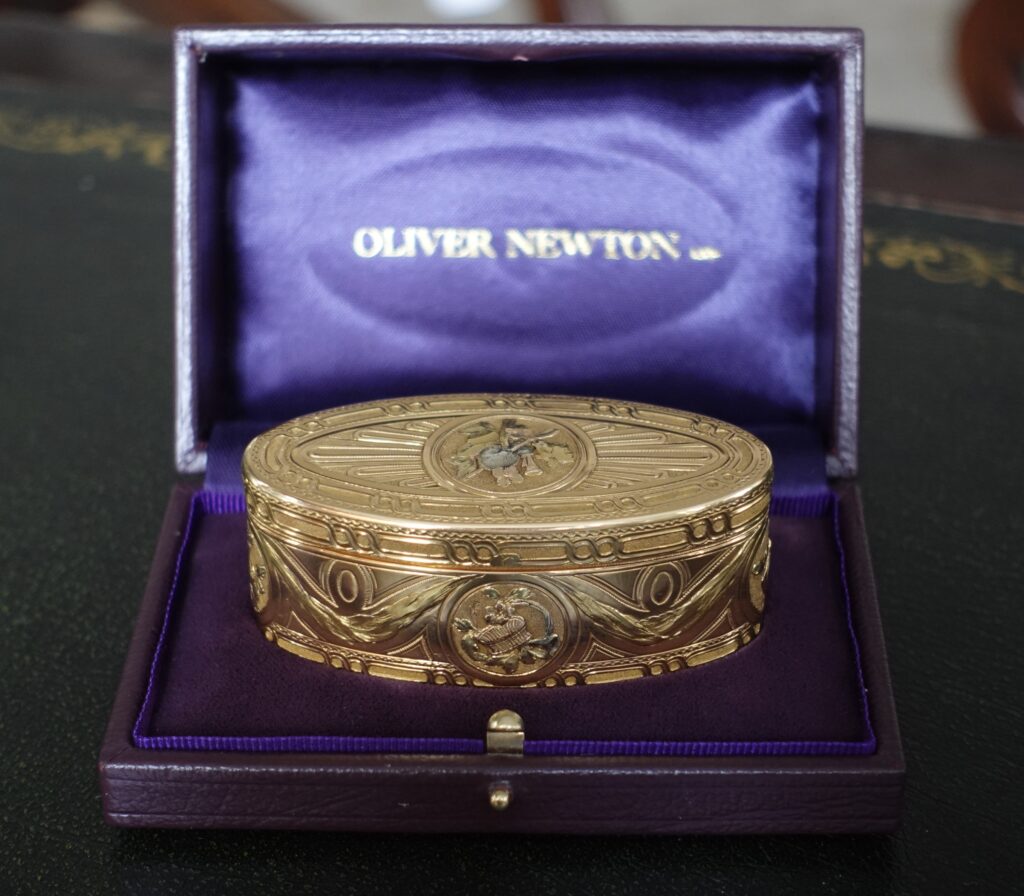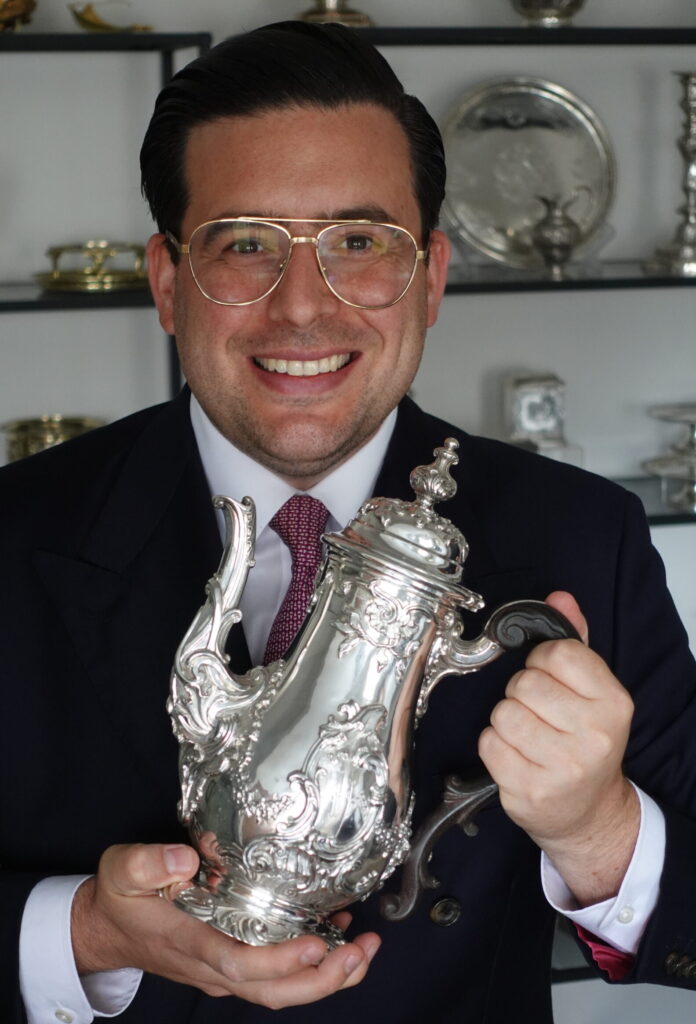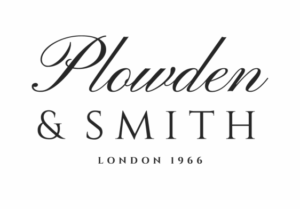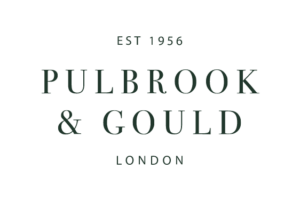The Art of Collecting Silver, with Oliver Newton
Surprising to some is that this most traditional of collecting fields – often considered rather academic and out of fashion – retains a strong following.
Aged just 35, Oliver Newton is a champion of silver from his premises at 45/46 New Bond Street in the heart of London’s art and antiques district.
Bitten by the collecting bug on antiques trawls with his grandmother from as young as seven – “Suddenly, history became real!” – he initially collected cameras before trading items on eBay. But it was an internship with Koopman Rare Art in his late teens during his university holidays that made silver his metier.
“I helped them in the second year at Masterpiece and saw objects of such historical importance and at a price level that I didn’t know existed in silver, and it blew me away,” he explains. “They were very good to me, and Lewis Smith offered me a job for when I left university.”

A vari-coloured gold snuffbox, in white, red and yellow gold, made in Paris in 1764 – part of the fascinating stock of such wares held by Oliver Newton, who has just had the case specially made for it.
Established as Oliver Newton Ltd for the past seven years, he insists that collecting silver is no longer the reserve of solely academics or the landed gentry.
“I didn’t grow up in this industry, and when I started at the age of 18, the change had already happened. In the old days more people collected specific hallmarks or silversmiths and it was the traditional backbone of the industry, but now what people really want is the wow factor.”
Oliver deals primarily in mid-17th to early 20th century English silver as well as English and European gold snuffboxes.
“I am a younger dealer and I do have quite a few younger customers. Nowadays, people such as tech entrepreneurs can earn money in large amounts very quickly; many sell their businesses and suddenly have the money and time to collect.
“Add them to those who traditionally have had the disposable income to focus on collecting and you have a healthy prospect.”
But what do they want?
“The thing that ties the customers together is the desire for quality silver whether they want it to decorate a specific space or because they simply adore the object and for no other reason. People who buy now want a great maker, quality, provenance, if possible, and overall something special whatever the price point is. Now, for instance, I have a set of serving dishes from a 1726-7 dinner service given by George I to the Earl of Chesterfield who became Ambassador to the Hague. It’s one of the most famous early 18th century dinner services originally weighing a total of approximately 7,000 ounces of silver, and the wine coolers from it are in the collection of the V&A.”
Certain pieces are always in demand: wine coolers, wine coasters, candlesticks, and candelabra, for example, as these look amazing on a table but don’t take any effort to use. That means that academic interest in silver has not entirely disappeared. People tend to buy what they like, but they also want to buy from a specialist, which is music to Oliver’s ears.
“One thing I try to do as a newer dealer in this field is to think of fresh uses for objects. We can get quite stuck on using salt cellars just for salt, but one of my clients, for example, uses them for ice cream. They also make ideal vases for table flowers. There are no rules – the buyer should make things suit their own lifestyle.”
Where he feels the market has weakened is in the middle range, especially early 20th century pieces such as tea sets, and flatware sets that are not the best quality and don’t have great artistic or historical merit.
So, what are Oliver’s tips for the potential buyer?
“Look at the object first, not the hallmarks. Ask yourself: is it beautiful? Can you see and feel the quality? Does it feel right? Once you have answered these questions, then look at the hallmarks and see if they fit the style and quality.”
Condition is also extremely important: “Are there any repairs? Does it have a coat of arms or has that been erased? That can affect the value. Is the decoration still sharp and clear or has it been worn with years of heavy cleaning?
Key to the best pieces is patina. This is especially important with 18th century silver and earlier. If they have been well cared for and remained largely untouched, they will have developed a bluish patina over several centuries which you cannot replicate.
“I just bought the most incredible coffee pot made in 1739 and it’s of museum quality. It has everything and I will be taking it to The Berkeley Square Fair if I haven’t already found a new owner for it,” says Oliver.

Oliver Newton with the museum quality coffee pot made in 1739, that he has just acquired.





